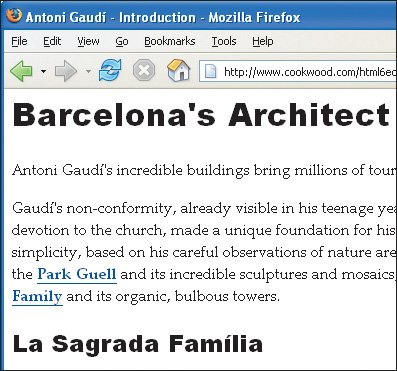Applying Bold Formatting
| Bold formatting is probably the most common and effective way to make text stand out. Using style sheets gives you much more flexibility with bold text, providing relative values or allowing you to get rid of it altogether. Figure 10.11. Browsers add bold formatting to headers (like h1 and h2) automatically. I can apply a normal font weight to remove it (since it's a bit much on this page). I've also added bold formatting to the emph class and to new and hovered links. To apply bold formatting:
To remove bold formatting: Type font-weight: normal.
Figure 10.13. The emphasized text (the word faith in the second to last line shown) is not only italic (from the preceding page) but also bold. |
EAN: 2147483647
Pages: 340


 Tips
Tips